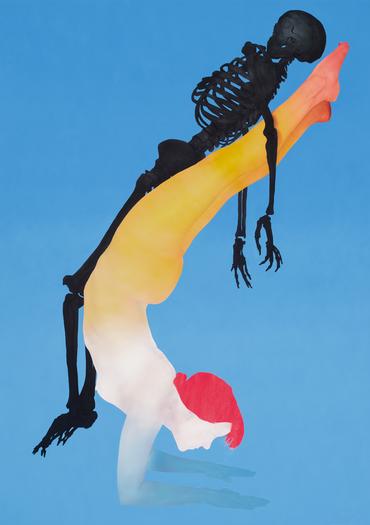
05 May TIO NYC: Cool Things to See & Do in the Big Apple
If you plan to be in New York on or around May 18, don’t miss Urban Stages’ Spring Jubilee, hosted by Telluride and New York local Frances Barlow, founder, Urban Stages. Event takes place in the Central Park Boathouse. Tickets here.
Fine Art: Chelsea, The Met, Tower 49 Gallery, Museum of Biblical Art
Like your art with a side of squid and rice? If yes, we recommend starting your tour of Chelsea and New York City’s very scene-y High Line with lunch at one of our go-to eateries, Tia Pol, a tiny, rustic restaurant featuring Spanish tapas and daily specials at 205 10th Avenue between 22nd & 23rd Streets.
The Daily Beast: “Tia Pol is a place that manages to feel both genuinely Spanish and unmistakably New York.”
New York Magazine: “This diminutive Chelsea tapas bar is possibly the best traditional Spanish restaurant in town.”
The New York Times: “Tía Pol, like the best tapas bars, is whatever you want it to be at the moment.”
Like the new Dolce & Gabbana ads featuring women well past their 70th birthdays clasping D&G’s latest must-have handbags, or the high-end fashion brand Celine showing novelist Joan Didion looking ultra cool, several of our favorite shows feature the work of Women of a Certain Age– and a few good men.
Or at that age when they worked their magic.
A resplendent show at the Michael Rosenfeld Gallery, 100 11th Avenue at 19th Street, “Moving Heaven & Earth,” features mature painting by Alma Thomas (1891 – 1978), created in the last two decades of her life, 1958 – 1978. (Through May 15). If you don’t smile when you walk through the door, you are in dire need of the Grinch cure.
(This later-in-life-and-still-going-strong thing is viral, with the late works of Miro featured at the Denver Art Museum, (go here for more), and the late works of Turner on display at The Getty Center. (Go here for more on Turner.)
Known for her large-scale abstract paintings comprised of rhythmic marks of exuberant color, Alma Thomas was born in Columbus, Georgia in 1891. Think Seuret’s pointillism on growth hormones with images deeply abstracted to externalize only their internal vibe.
In the 1950s, Thomas started to develop the method and style that has earned her a place among the most innovative American painters of the 20th century. She embarked on a decade-long formal study of art at American University with painter Jacob Kainen. Departing from realism, Thomas loosened up her brushwork and began to focus more intently on fields of color. By the late 1950s, she found her voice in abstraction, patterning geometric shapes in rich colors against solid backgrounds. In 1960, at the age of sixty-nine, Thomas retired from teaching to devote her time exclusively to art….
Lebanese-American poet, essayist and visual artist, Etel Adnam, born 1925 and still going strong, has two shows going, including one at Galerie Lelong, 528 West 28 Street. (through May 8.)
Below is a review from the Wall Street Journal.
FOR OVER HALF a century, passionate pilgrims have been drawn to a four-story Belle Epoque building in Paris’s elegant sixth arrondissement. Some still come to see the final home of Albert Camus, the Algerian-born absurdist who won the Nobel Prize for literature in 1957. But today, the most fervent among them come to pay homage to Etel Adnan, an atist and writer whose vitality and curiosity belie her 90 years. Like some Delphic cardigan-wearing yogi, Adnan sits in a poufy red chair with her feet barely grazing the floor below and gives her full attention to her interlocutors. Of mixed Greek and Syrian heritage, she speaks at least five languages, in a stream of ambiguous Mediterranean cadences. Conversation tends to hover around her holy trinity of love, war and poetry—the primary subjects of her nearly dozen books. The arc of Adnan’s own life, punctuated by the fall of an empire, affairs of the heart and mind, tectonic political shifts, exiles and returns, is the stuff of Russian novels.
When her guests have left, Adnan retreats to a room in the back of the apartment she shares with her partner, the Syrian-born artist and publisher Simone Fattal —a warm space filled with Persian carpets, history books and all manner of artistic bric-a-brac—to paint. The colorful canvases that have come to be her trademark are semi-abstractions, mostly depicting mountains and sun.
But not all the blue hairs are women. Gray Power rules at Robert Irwin’s “Cacophonous” at Pace, 532 West 25th Street, (through May 9) is dazzling. Literally.
Born in 1928, Irwin began his career as a painter in the 1950s, but grew to become an installation artist and pioneer of the L.A.-based “Light and Space” movement of the 1960s. For the Pace show, Irwin produced eight works that advance of use of fluorescent light, a material he first employed in the 1970s.
We stopped by Driscoll Babcock to see the work of Alan Gussow, (1931-1997), which captures the energy of natural environment through a lively synthesis of abstract expressionism and realism to reveal a profound and poetic artistic vision. Gussow’s unique imagery conveys the intimate link between man and the environment, invoking his personal encounters with the smells, sounds, tastes, and tactile sensations of nature.
But in the back room of the gallery, we spotted work that looked very familiar. Turns out an artist named Jenny Morgan whose career was launched by Ivar Zeile of Denver’s PLUS Gallery, is also represented by Driscoll Babcock and has her second solo show at the venue, “All We have is Now,” opening May 14.
Years ago, when Ivar told us about Jenny, she had just graduated from the Rocky Mountain College of Art & Design and was on her way to the prestigious School of Visual Arts in New York. Masters degree in hand, she was asked to become a studio assistant to the iconic artist Marilyn Minter. In short order, Jenny was picked up by her New York Gallery (Driscoll Babcock) and commissioned by The New York Times to do a portrait of Wikileaks honcho Julian Assange. The painting we bought, a riff on Goya’s “Disasters of War” was a self -portrait: Jenny as Hope, a choice that proved to be prescient – although Jenny no longer needs hope. Her abundant gifts as a portrait artist and observer of human nature have put her on a trajectory that will, we believe, land her in a gallery of luminaries in the genre. Move over Chuck Close, Andy Warhol, and Alex Katz. Make room for the lady.
From the press release:
The artist’s second solo exhibition at the gallery is an investigation of darkly charged psychological works in intense hues. This new series of paintings present amorphous, yet graphically stark figures rendered in a richly saturated prismatic array of colors. Centered on themes of life, death, and rebirth, Morgan’s works question how we relate to our past and challenge us to live in the present.
Morgan painted the skeletal work, IN THE MOMENT (DEATH HYMN), by rendering each bone individually, without any prior plotting or planning. The end result shows not only a variety of techniques and colors, but a sense of spontaneity, freedom and immediacy. For a subject matter so deeply entrenched in death, the end result is a life affirming meditation.
In SKELETON WOMAN life and death connect in the forms of a darkened skeleton draped over the exuberant figure of a woman. While the heft of the skeleton could weigh the figure down, she balances with an almost weightless pose. For Morgan these works are about “releasing old skeletons” and being able to “look at everything in the light and realize it no longer feels so dark.”
YOU ONLY LIVE ONCE is a self-portrait of the artist with the essence of new life- a baby. Amongst the images of death, this piece brings the show full circle with a life-affirming beacon. Brutally earnest, Morgan lays bare her own concerns about motherhood, self-perception and the future.
Deeply personal, yet thoroughly universal, the works in ALL WE HAVE is NOW achieve a striking intensity and psychological depth, breaking through the ideals of traditional portraiture and the preciousness of realism.
“Adding something fresh and necessary to the genre of portraiture may seem impossible, but in that realm, Jenny Morgan is crushing it. Don’t label her paintings figurative or photoreal. Her extraordinary skills for rendering the human figure are besides the point. Layers of the unconscious are revealed in the reductive abstraction of her portraits. As she grinds away at physical and metaphorical surfaces to uncover a spirit, an honest representation of “the feels” becomes visible. Many can approximate likeness, but no one can expose the soft center of the human core quite like Jenny Morgan,” Juxtapoz, September 2014
Our friend Lisa Barlow, a major foodie, chef, writer and photographer suggested we end our tour of Chelsea (and rest our weary feet) with cocktails at New York’s indoor, historic food mecca, Chelsea Market, a short walk on cobblestoned streets through the now very trendy Meatpacking District. The insider venue, located on 16th Street and 8th Avenue, was built on the bones of a landmark building that was the birthplace of the Oreo Cookie.
There are no bad choices at the Chelsea Market. We perched one of the quieter bars in The Green Room, with an impressive array of locavore tipples, including Fair vodka made from quinoa.
Leaving Chelsea, you might want to head over to the Tower 49 Gallery, 12 East 49, where two young curators, Ai (means “love” in Japanese) Kato and Karen Wilkin have put together a small show entitled “The Bennington Legacy,” which traces the lineage of a group of influential artists and teachers associated with the abstract modernist movement at the eponymous college, located in Bennington, VT, from the early ‘60s through the ‘80s. The small but muscular exhibit features the abstractions, drawings on the air in metal, of three more Boomers, Willard Boepple, Isaac Witkin and James Wolfe.
And don’t miss “The Plains Indians: Artists of Earth and Sky” is now on display at the Metropolitan Museum of Art through May 10.
Below is the review from The New York Times.
Some of the earliest surviving art by native North Americans left America long ago. Soldiers, traders and priests, with magpie eyes for brilliance, bundled it up and shipped it across the sea to Europe. Painted robes, embroidered slippers and feathered headdresses tinkling with chimes found their way into cupboards in 18th-century London and Paris, and lay there half-forgotten. Now, in “The Plains Indians: Artists of Earth and Sky” at the Metropolitan Museum of Art, some of those wondrous things have come home.
Of the about 130 pieces in the show, on loan from more than 50 international collections, those sent by the Musée du Quai Branly in Paris are exceptional: a drawing, on animal hide, of a half-abstract bird with prismatic wings; a raven-plume bonnet with feathers swept back as if hit by wind; and a bead-encrusted shoulder bag with a double-crescent design. They are all part of an exhibition that has to be one of the most completely beautiful sights in New York right now: But what would Europeans have thought when they first unpacked these objects in Paris centuries ago?…
The current exhibition at the Museum of Biblical Art features 23 masterpieces of early Florentine Renaissance sculpture—most never seen outside Italy. And MOBIA is the sole world-wide venue for this once-in-a-lifetime exhibition.
These wondrous works—by Donatello, Brunelleschi, Nanni di Banco, Luca della Robbia and others—were made in the first decades of the 15th century for then Florence Cathedral (“Il Duomo”), which was then in the last phase of its construction and are figural complements to Brunelleschi’s soaring dome, conveying a sense of courage and human potential. Like the dome, these statues of prophets and saints express the spiritual tension of a faith-driven humanism destined to transform Western culture
Theatre: Wolf Hall, Hand to God
On a trip earlier in the month to New York, we saw the Royal Shakespeare Company’s production of “Wolf Hall,.” And of four plays we saw on two separate visits to the Great White Way, that remains the one not to miss. Recently “Wolf Hall” was nominated for eight Tony Awards, including Best Actor, Best Play and Best Director.
“Hand to God,” which stars a foul-mouthed hand puppet named Tyrone is good dirty and dark fun. Actor Steven Boyer, life support for Tyrone, turns in a bravura performance as the besieged Jason (and received a Tony nod for Best Actor).
Coda:
An earlier review of the shows at the Museum of Arts & Design still stand. See the hyper realist paintings of New York by artist Richard Estes (through September 20) and Ralph Pucci’s mannequins (through August 30).
And catch lunch or dinner at Robert, MAD’s wonderful restaurant (on the 9th floor). With views of Columbus Circle, the venue may be the first restaurant that boasts a video-art installation, a “sound wave” at the communal table, and two lighting installations. The food — contemporary American fare with Mediterranean influences – is as intoxicating as the views and decor.
No wonder the waiters all smile.


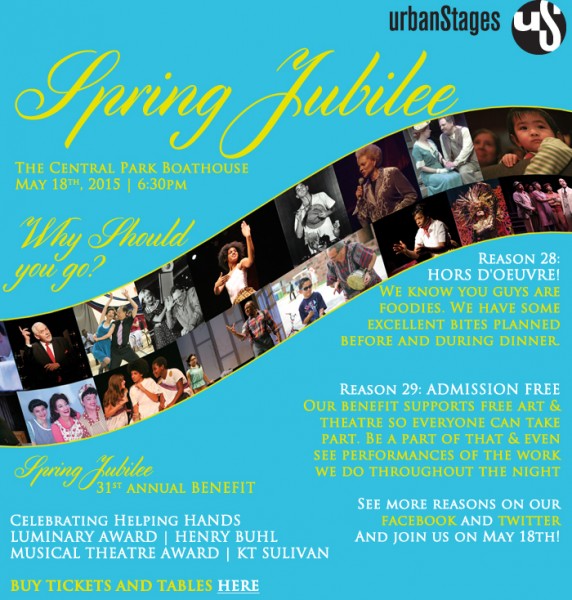
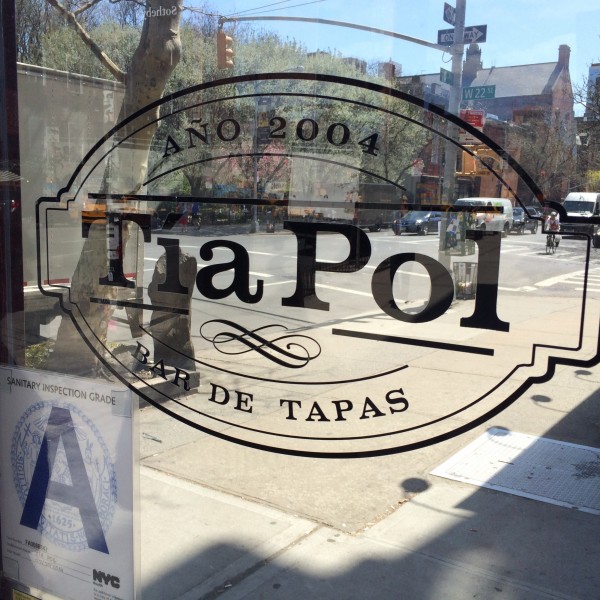
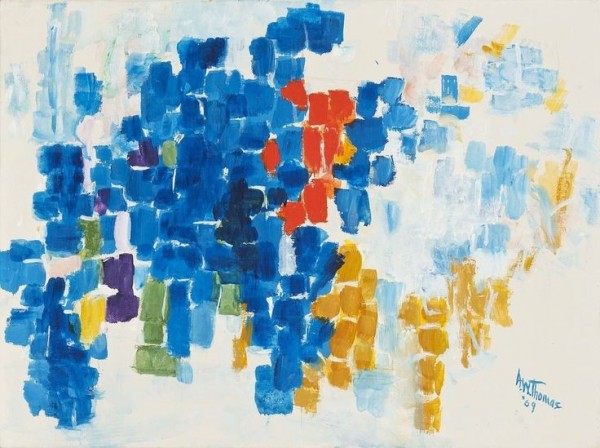
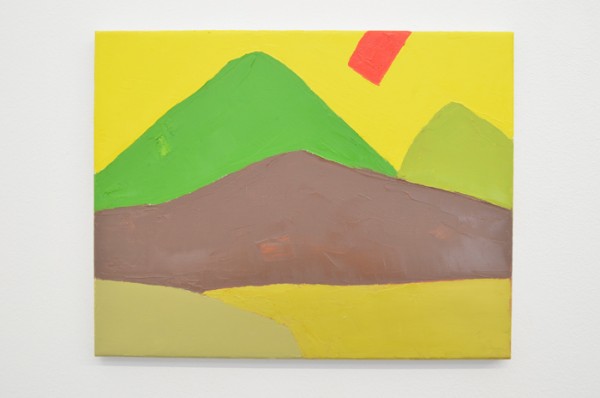
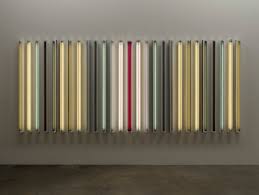
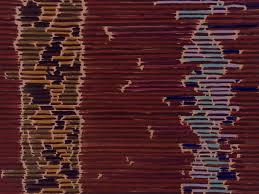


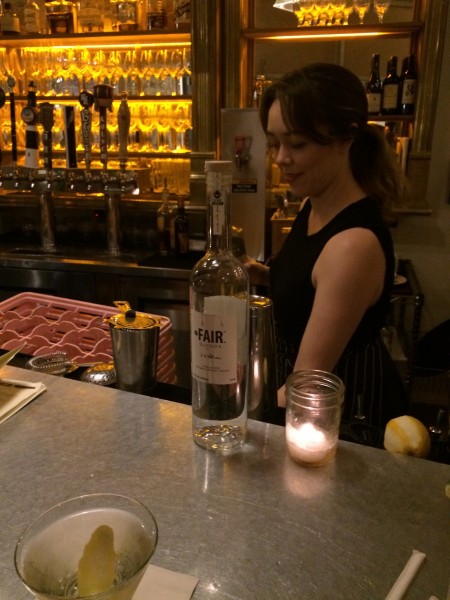
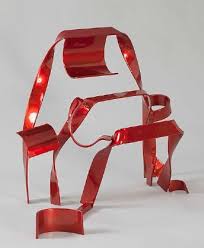
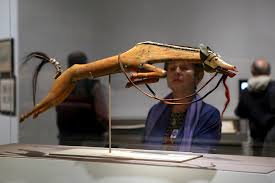
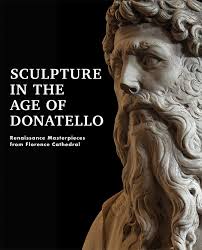
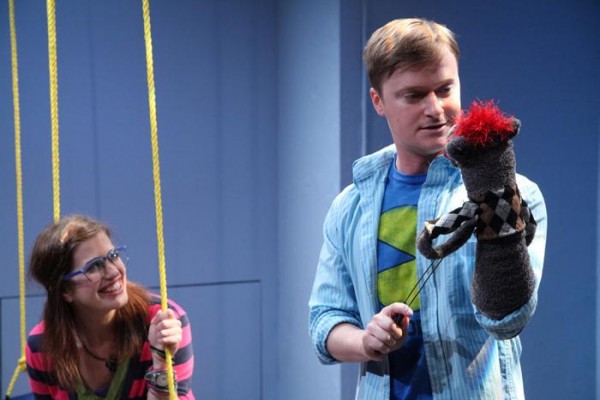

Sorry, the comment form is closed at this time.